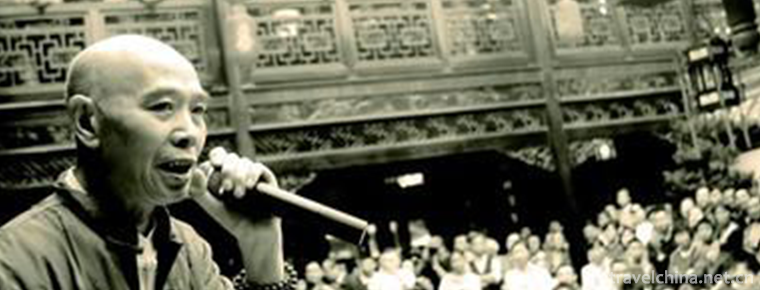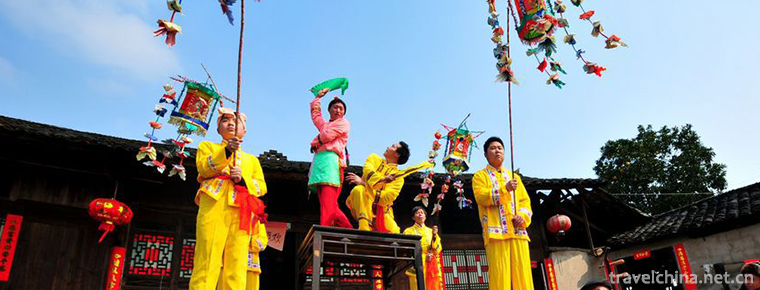Nanchong medical and health
Nanchong medical and health
By the end of 2019, Nanchong has 8457 medical and health institutions (including village clinics), including 166 hospitals and 8250 primary medical and health institutions. The number of beds in medical and health institutions was 43726, an increase of 4.9% over 2018. There were 35879 health technicians, an increase of 2.9% over 2018, including 12077 licensed doctors, 1990 licensed assistant doctors and 15101 registered nurses.

-
Huangshan Yi Culture Tourist Area
Huangshan Yi Cultural Park is a national AAAA-level tourist attraction, located in the northwest of Linyi Economic and Technological Development Zone..
Views: 265 Time 2019-01-18 -
Duyi barley roasting technology
Duyi Maiguan was opened in 1738, the third year of Qianlong in Qing Dynasty. The entrepreneur's surname is Wang, and his native place is Shanxi. For the first time.
Views: 204 Time 2019-04-28 -
Primitive Pottery Making Skills of Li Nationality
The primitive pottery making technique of Li nationality, the traditional handicraft technique of Changjiang Li Autonomous County, Hainan Province, is one of the national intangible cultural heritages.
Views: 182 Time 2019-05-13 -
Sichuan Book Review
Sichuan commentary, also known as vernacular speech and commentary, is one of the traditional operas in Sichuan Province. It is popular in all parts of Sichuan and Yunnan and Guizhou. The performers t.
Views: 132 Time 2019-06-16 -
Adjustment and suspension
Lifting is a unique folk sports event in Shaoxing City, Zhejiang Province. Appeared in the middle and late Qing Dynasty, the tuning and hanging actors were named "tuning and hanging" because.
Views: 90 Time 2019-06-21 -
Xiushan Festive Lantern
Xiushan lantern is an important school of lantern art in southwest China. It is a folk cultural phenomenon and folk performing art that integrates religion, folk custom, singing and dancing, acrobatic.
Views: 80 Time 2019-07-08 -
Production Techniques of Yixing Purple Sand Pottery
Yixing Purple Sand Pottery Manufacturing Techniques, Dingshu Town, Yixing City, Jiangsu Province, local folk traditional pottery making techniques, one of the national intangible cultural heritage..
Views: 149 Time 2019-07-12 -
Yicheng Flower Drum
Yicheng Huagu, according to historical records, existed during the Zhenguan period of the Tang Dynasty, reached its peak in the Ming Dynasty, and only in the Qing Dynasty did this activity have a clea.
Views: 193 Time 2019-07-13 -
Beijing Wuzi University
Beijing Wuzi University is a public institution of higher learning which is characterized by logistics and circulation, based on economic disciplines, with management disciplines as its main branches,.
Views: 313 Time 2019-09-06 -
A summary of Panzhihua
In 2019, the GDP of Panzhihua will reach 101.013 billion yuan, an increase of 6.3% over the previous year in terms of comparable prices. In terms of industries, the added value of the primary industry was 9.168 billion yuan, an increase of 3.4%; the added value of the secondary industry was 55.074 billion yuan, an increase of 5.7%; the added value of the tertiary industry was 36.771 billion yuan, an increase of 8.5%..
Views: 128 Time 2020-12-14 -
Climate of Luzhou
Luzhou city belongs to subtropical humid climate zone, and the three-dimensional climate is obvious in the southern mountainous area. It has high temperature, sufficient sunshine, abundant rainfall, four distinct seasons, long frost free period, temperature, light and water in the same season.
Views: 374 Time 2020-12-14 -
Deyang hydrology
The rivers in Deyang City belong to Tuojiang River and Fujiang River system. The main rivers are Mianyuan River, shiting River, Yazi River, Qingbai River, Kaijiang River, etc. The Northwest Mountainous Area of the city is located in the north of Shifang and Mianzhu.
Views: 352 Time 2020-12-14








